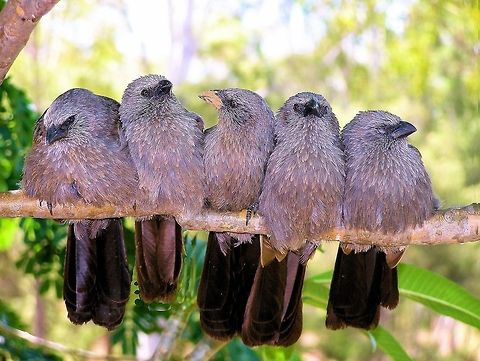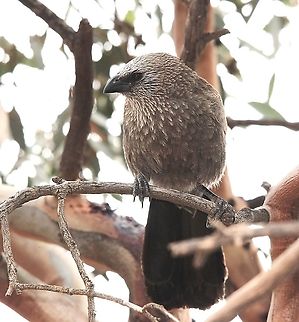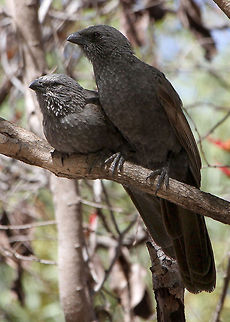
Appearance
Measuring around 33 cm in length, the Apostlebird is a predominantly dark grey bird with a long black tail tinted greenish in sunlight. The grey feathers on the head, neck and breast are brushed with paler grey-white and the wings are brownish. The legs and bill are black and the eyes brown or white.
Distribution
The natural range is across inland eastern Australia, from the mallee regions of northern Victoria and eastern South Australia, north through New South Wales and central-western Queensland to the Gulf Country. There is an isolated population in the Northern Territory. Dry open woodland is the preferred habitat, especially ''Callitris'' in New South Wales and ''Casuarina'' in Queensland, and Lancewood-Bulwaddi communities in the Northern Territory.
Status
Apostlebirds are not listed as threatened on the Australian Environment Protection and Biodiversity Conservation Act 1999. However, their conservation status varies from state to state within Australia. For example:⤷ The Apostlebird is listed as threatened on the Victorian Flora and Fauna Guarantee Act . Under this Act, an ''Action Statement'' for the recovery and future management of this species has not yet been prepared.
⤷ On the 2007 advisory list of threatened vertebrate fauna in Victoria, the Apostlebird is not listed as a threatened species.
Habitat
The natural range is across inland eastern Australia, from the mallee regions of northern Victoria and eastern South Australia, north through New South Wales and central-western Queensland to the Gulf Country. There is an isolated population in the Northern Territory. Dry open woodland is the preferred habitat, especially ''Callitris'' in New South Wales and ''Casuarina'' in Queensland, and Lancewood-Bulwaddi communities in the Northern Territory.Reproduction
Apostlebirds are a socially living, cooperative breeding species with each breeding group generally containing only one breeding pair, the rest being either their helper offspring, kin or unrelated adult birds. Most group members help construct a mud nest, share in incubation of the eggs, and defense of the nest. Once the eggs are hatched, all members of the group help feed the chicks and keep the nest clean.Apostlebirds are a fission-fusion society. In winter, birds flock in larger groups, and as breeding season approaches winter groups break into smaller breeding groups. This change in group size is a consequence of breeding groups merging in the winter and breaking apart again in the summer breeding season. Breeding groups use small, non overlapping home ranges around the nest site, while winter ranges are larger with groups freely interacting with other groups[9].
Breeding season is from August to December. The nest is a deep cup-shaped structure made of grasses held together with mud or sometimes manure in a tree fork up to seven or eight metres above the ground. Three to five pale blue-white eggs sparsely splotched with brown and lavender shades are laid measuring 22 mm x 29 mm. They are tapered oval in shape.
References:
Some text fragments are auto parsed from Wikipedia.